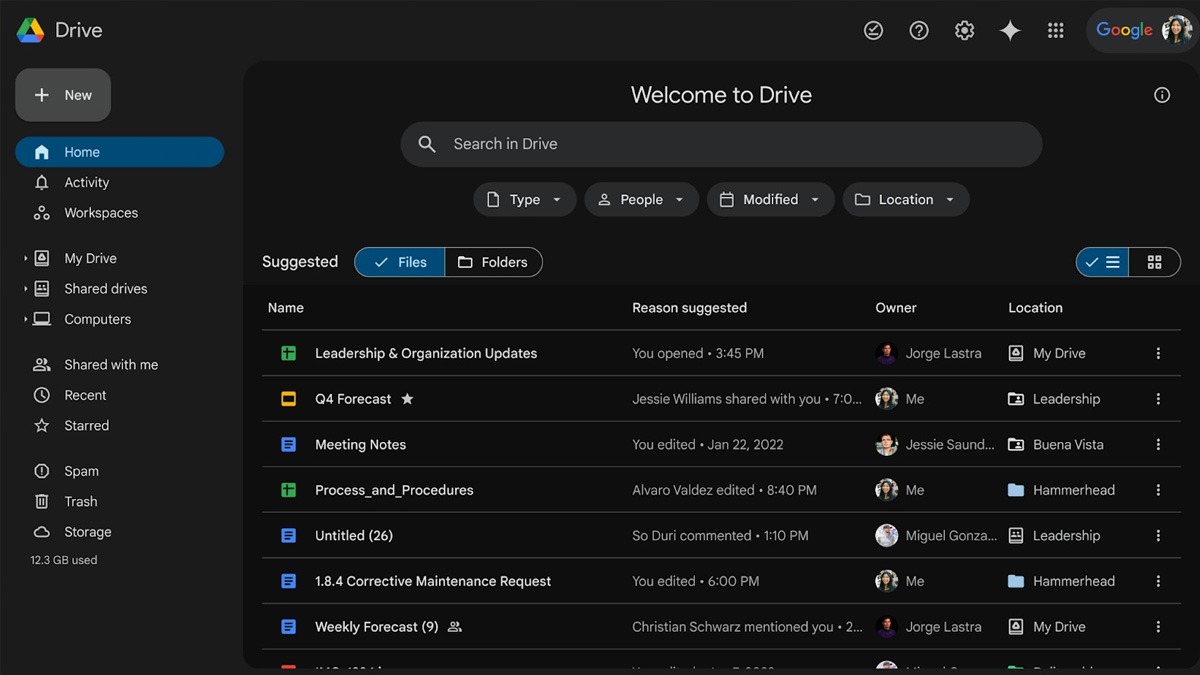Just In
- 5 hrs ago

- 5 hrs ago

- 6 hrs ago

- 7 hrs ago

Don't Miss
- Sports
 Pakistan vs New Zealand: How Serious Is Mohammad Rizwan Injury? Is His T20 World Cup Spot at Risk?
Pakistan vs New Zealand: How Serious Is Mohammad Rizwan Injury? Is His T20 World Cup Spot at Risk? - Education
 Ratan Tata's Social Endeavors Recognized With KISS Humanitarian Award
Ratan Tata's Social Endeavors Recognized With KISS Humanitarian Award - Finance
 From Trent To HAL: Motilal Oswal Recommends 3 Stocks To Buy This Week
From Trent To HAL: Motilal Oswal Recommends 3 Stocks To Buy This Week - News
 US White House Considers Immigration Relief For Spouses Of US Citizens: What You Need To Know
US White House Considers Immigration Relief For Spouses Of US Citizens: What You Need To Know - Movies
 Salman Khan To Move To New Home After Firing Incident; To Start Shooting For Sikandar With Tight Security
Salman Khan To Move To New Home After Firing Incident; To Start Shooting For Sikandar With Tight Security - Lifestyle
 Hanuman Jayanti 2024: Wishes, Greetings, Messages, Images, Texts, SMS, Twitter Status And Instagram Captions
Hanuman Jayanti 2024: Wishes, Greetings, Messages, Images, Texts, SMS, Twitter Status And Instagram Captions - Automobiles
 Top Tips – How To Charge Electric Scooters For Best Battery Life
Top Tips – How To Charge Electric Scooters For Best Battery Life - Travel
Kurnool's Hidden Gems: A Guide To Exploring India's Lesser-Known Treasures
OnePlus 7T Review: Best-in-class Android User-Experience
OnePlus has announced a total of five smartphones in 2019. Interestingly, all these smartphones are different variants of the OnePlus 7 and are touted asflagship killers. At the time of writing this review, the most affordable handset in the OnePlus 7-series line-up-- the OnePlus 7 is selling at Rs. 29,990 for the base variant. The most expensive OnePlus 7T Pro McLaren Edition carries a premium price tag of Rs. 58,990 and offers 12GB of RAM and 256GB storage.
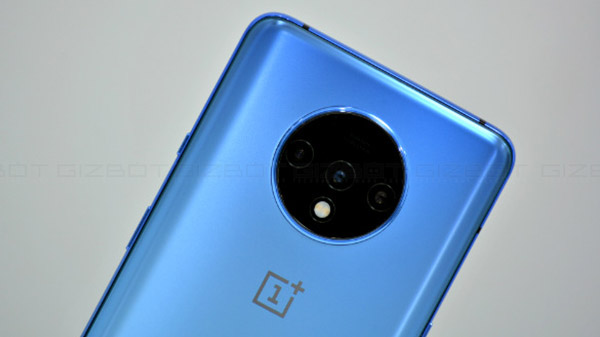

- Premium Aesthetics
- Fluid 90Hz AMOLED Display Is A Delight
- Smooth Software Experience (Android 10)
- Good Haptic Feedback
- Glitch Free Performance
- Smooth Gameplay
- Loud Stereo Speakers Output

- No Official IP rating (Water-dust Resistance)
- No microSD Card Slot
- No 3.5mm Headphone
- Better Camera Smartphones Available In Same Price
- Underwhelming Battery Life
- No Wireless Charging
- Cannot Shoot 48MP RAW Images
The OnePlus 7T, the device in question, comes just after 4 months of the launch of the OnePlus 7. It is priced at Rs. 37,999 for the base variant and is bound to make you feel sad if you have recently purchased the OnePlus 7. The brand's philosophy of unveiling new products in a shorter time period is questionable. It will disappoint some loyal OnePlus fans who have recently invested in any of the OnePlus 7 series devices.
The OnePlus 7T is simply a device that bridges the gap between the OnePlus 7 and the OnePlus 7 Pro. It borrows the 90Hz display from the OnePlus 7 Pro, ditches the curved design, adds a third-lens to the camera setup and packs in the Snapdragon 855 Plus chipset. Does all of it make the OnePlus 7T the best value flagship smartphone in the sub-40K price segment? Let's find out.

Design- OnePlus 7 With A Circular Rear Camera Setup
The OnePlus 7T is essentially a OnePlus 7 with a circular rear camera module. The smartphone is identical to the OnePlus 7 when seen from the front. Even the waterdrop notch is still at its place as the company did not put much effort to replace it with a pop-up camera module. For a full-screen experience, you can explore the Xiaomi Redmi K20 series, OPPO Reno series or even the Vivo V17 Pro.
The OnePlus 7T's back panel is what makes it different from the OnePlus 7. The new device features a big circular camera housing which places three sensors in a horizontal setup. A flashlight sits at the bottom of the centrally aligned camera sensor. While the camera housing is very prominent and does not necessarily go with the phone's aesthetics, it doesn't look that bad. It differentiates the OnePlus 7T from the other OnePlus 7 series devices.
Other than the extra prominent circular camera housing, the OnePlus 7T's design brings nothing new to the table. As an overall device, it feels premium, like all other OnePlus handsets. The OnePlus 7T comes in two colors -- Glacier Blue and Frosted Silver. We are using the Blue variant and the new color shade looks unique.
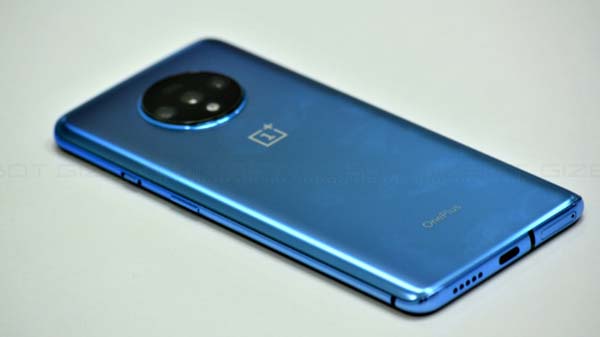
No Official Water-Dust Resistance, No 3.5mm Jack, No microSD Card Slot
OnePlus devices have always failed to address the basics. Like the previous OnePlus handsets, the OnePlus 7T also lacks an official IP rating for water-dust resistance. The company has offered Corning Gorilla Glass protection on the front and the back panel but hasn't specified the version of the glass used. Considering the premium price-point, it should be Gorilla Glass 6. Any less than that will again come as a disappointment.
And if you are investing in the OnePlus ecosystem, be ready to go wireless as there's no 3.5mm headphone jack on the OnePlus 7T. Moreover, you cannot expand the device's internal storage. We would recommend you to go for the higher variant as the price difference is just Rs. 2,000 and offers double the internal storage.
If these three features are important to you, the LG G8s ThinQ is a better alternative in the sub-40K segment. The smartphone is priced at Rs. 36,990 and offers IP68 water-dust resistivity. It also offers the good old 3.5mm headphone jack and a microSD card slot.
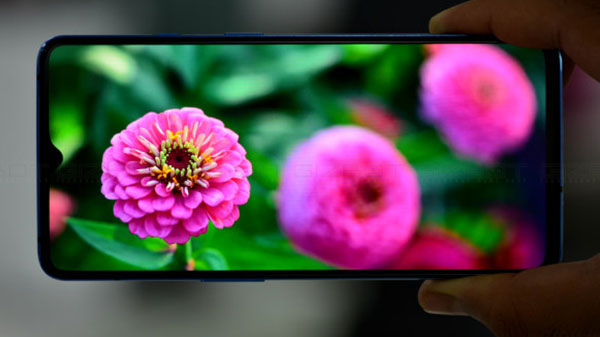
Display - The 90Hz AMOLED Display Is A Sheer Delight
The OnePlus 7 Pro introduced the notch-less 90Hz AMOLED screen with a QHD+ resolution and gentle curves on either side. The OnePlus 7T retains the 90Hz refresh rate but comes in more mainstream FHD+ (1080 x 2400p) resolution. Moreover, the display is also flat, which makes it slightly more usable than the OnePlus 7 Pro's curved AMOLED panel; however, it lacks that curved screen X-factor which has its own charm.
To put it simply, the display on the OnePlus 7T is essentially the OnePlus 7's AMOLED panel with a faster 90Hz refresh rate. The 90Hz refresh rate makes everything super responsive. From apps loading to scrolling to screen navigation, everything feels extremely fluid.
The 6.55-inch AMOLED panel is HDR10+ compatible and is also claimed to offer support for sRGB and P3 colour gamut. The AMOLED panel offers deep blacks and good contrast levels that make the multimedia experience quite immersive. The OnePlus 7T also features a very responsive haptic system, similar to the OnePlus 7 Pro. Overall, it is a one of the best screens in the market on a sub-40K smartphone.
However, there's one handset that ups the ante in the screen's refresh rate. It is the Asus ROG Phone II that brings a 120Hz AMOLED display in the same price-point. The ROG Phone II's screen is slightly better in the overall display performance than the OnePlus 7T's 90Hz AMOLED panel.

Camera Performance- Significant Improvements But far From Being A Flagship Camera
A major highlight of the OnePlus 7T is its better camera hardware than the OnePlus 7. The big circular camera module at the back panel features three sensors. The primary sensor is a 48MP camera with Sony IMX586 sensor that uses a bright f/1.6 aperture lens. It is accompanied by a 16MP wide-angle lens (f/2.4) and a 12MP telephoto lens (f/2.2). The 48MP sensor uses both OIS and EIS to stabilize the image/video output. The 16MP wide-angle lens covers 117-degree FOV and the 12MP telephoto lens offers 2X optical zoom. For selfies, the OnePlus 7T features a 16MP sensor with an f/2.0 aperture.
As far as the performance is concerned, the camera takes better pictures than all previous OnePlus devices. You can shoot 48MP images, but only in the Pro mode and that too with JPEG and not in RAW format. The details are impressive and the colors look true-to-eyes. The pixel-binned shots show some extra saturation and look slightly edited.
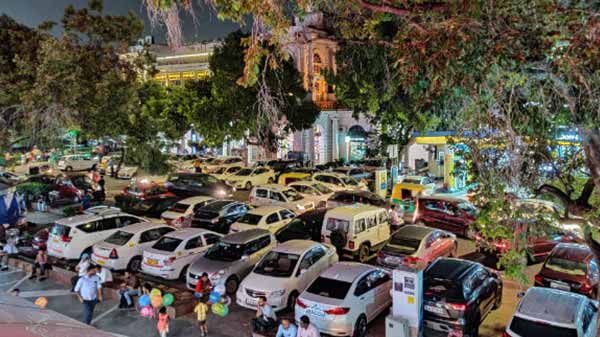
Low-Light Camera Output
As you start shooting in low-light, you realize that the OnePlus camera team is still unable to crack the code. The color output, details, and other important image properties just couldn't justify the phone's price-point. To put things in perspective, you can achieve similar results with the night mode on the Realme XT and the Redmi Note 8 Pro, two phones which are priced one-third of the OnePlus 7T. The above shot captured in decent lighting shows noticeable noise at infinity points. In situations where the light is really low, the OnePlus 7T's night mode is not of much use.

Inconsistent Focus Mechanism
Like some previous OnePlus devices, the camera setup on the OnePlus 7T also has inconsistent autofocus. The camera setup often failed to lock the subject in focus and delivered blurry shots. The 16MP selfie camera also has some serious focus issues. The selfie camera just couldn't capture a crisp shot in daylight with timer enabled and focus set on the subject.
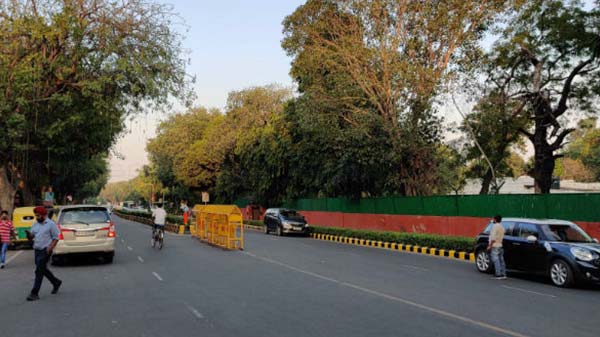
What Else Seems Missing?
The dynamic range and sharpness are good but some handsets in the same price-point perform better in this area. For instance, shots captured on the LG G8s ThinQ show a better dynamic range and better overall sharpness. The OnePlus 7T images also lack good contrast levels. The wide-angle shots captured on the OnePlus 7T also fail to impress.
The LG G8s ThinQ captures 137-degree FOV whereas the OnePlus 7T only covers 117-degree field-of-view. Moreover, the OnePlus 7T's camera cannot preserve the details at the frame's infinite points. They are mostly overexposed or just become softer in standard and wide-angle shots.

What Has Improved?
The portrait lens managed to capture decent shots even under harsh lighting conditions. The macros at 2.5 cm also look decent. The images show fine textures and natural colors. The video output at 4K, 1080p 60/30fps and 720p formats look crisp. The video stabilization also works well to stabilize the video output.

Hardware And Software Performance
As expected, the OnePlus 7T shines in the performance department. The phone is powered by Qualcomm's latest Snapdragon 855+ chipset paired with 8GB LPDDR4X RAM (standard) and 128GB/256GB of storage. We are currently testing the 256GB version and there's no other Android handset in the sub-40K price segment that matches the user experience offered by the OnePlus 7T.
With 90Hz screen and the super-fast internal hardware, the performance is just downright brilliant. You can simply forget about stutters and any other form of performance-related slowdown issues. While playing games like PUBG, you can experience deep vibration feedback which further enhances the gaming experience. This phone makes the standard 60Hz display devices a thing of the past. If you are looking for a device that offers the best-in-class user-experience when it comes to apps loading, basic scrolling, gameplay, web-browsing and other operational tasks, the OnePlus 7T is the answer.

Best-In-Class User-Experience
The OnePlus 7T runs Android 10 out-of-the-box and the company has neatly optimized the UI for the 90Hz refresh rate. The UI is clean and free of unwanted bloatware. The level of customization that the OxygenOS offers is just ideal. Other manufacturers can use it as a reference model to code the software on their Android handsets.
The OnePlus 7T offers a system-wide dark mode, new live wallpapers, app locker, parallel apps, DC dimming (hardware-level display brightness control), smooth gestures, newly added Zen mode, and a lot more. Overall, the software user-experience on an Android phone cannot get better than this.
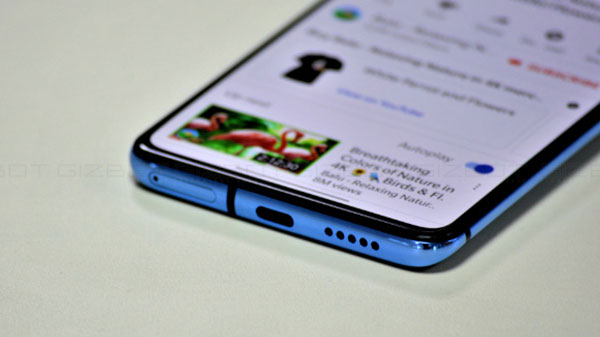
Good Audio Delivery
The OnePlus 7T features stereo speakers that produce excellent output. The grille at the top of the waterdrop notch doubles up as a speaker. The second unit sits at the bottom, adjacent to the Type-C port. Combined, the two speakers produce very loud and clear audio and make the multimedia experience quite immersive. The sound produced is also very well-balanced. As there's no 3.5mm headphone jack, you have to use wireless headphones or a connector to pair any standard 3.5mm headphones.
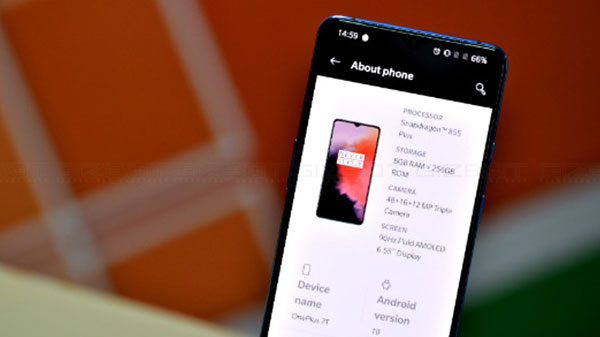
Benchmarks Performance
We also ran the same set of benchmarks that we ran on the Asus ROG Phone II as both the handsets are backed by the same Qualcomm Snapdragon 855+ chipset. The OnePlus 7T scored 469718 on Antutu, whereas the ROG Phone II touched 390672 in the same test.
The OnePlus handset scored 6145 in 3D Mark Sling Shot Extreme OpenGL ES 3.1 and 5250 in 3D Mark Sling Shot Extreme Vulkan test. The Asus ROG Phone II scored better with 6195 and 5358 respectively in the same 3D Mark tests.
In the PC Mark Work 2.0 Performance test, the OnePlus 7T touched 10168 and the Asus ROG Phone II scored 12615. We also ran the Geekbench 5 benchmark and recorded a score of 740 in Single-core test and 1975 in Multi-core test on the Asus ROG Phone II, whereas the OnePlus 7T recorded 746 and 2613 respectively in the same tests.
The results show that both the Asus ROG Phone II and the OnePlus 7T offer almost similar results. The OnePlus 7T managed to win in the Antutu and Geekbench test, which essentially tests the user experience, storage speed, multitasking speed, and the runtime speed.
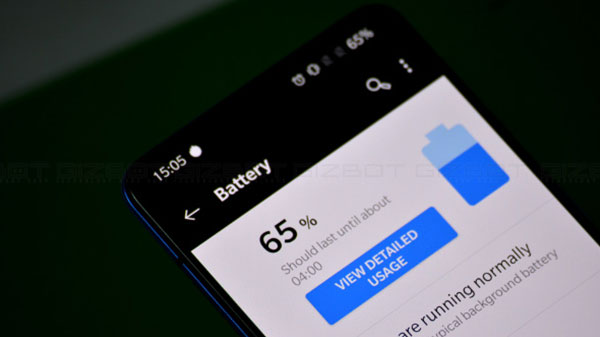
Battery Life
The OnePlus 7T is backed by a 3,800 mAh battery cell that supports the company's Warp Charge 30T technology. The battery lasting capacity is limited to one day even if you are using the phone moderately. The phone cannot survive a day if you stream videos on loop or play games on a stretch. The only savior is the OnePlus' fast-charging technology that supplies 30W current and charges the 7T from zero to 100% in less than 60 minutes.

Verdict
The OnePlus 7T is the ideal handset you should invest in if you haven't purchased any OnePlus device in the last six months. If you already own the OnePlus 7 or the OnePlus 7 Pro, sit back and wait for the company to launch the OnePlus 8 series devices. The recently launched OnePlus devices (OnePlus 7T, OnePlus 7T Pro and OnePlus 7T Pro McLaren) doesn't offer much to qualify as entirely new smartphones for the OnePlus 7 Pro users.
As a standalone device, the OnePlus 7T offers the best-in-class hardware and software performance. The 90Hz display is a delight to use and makes everything super responsive and fluid. The SD855 Plus with 8GB RAM and the responsive screen makes the OnePlus 7T a phone for power users.
However, the same cannot be said for the camera, battery life, and even durability of the OnePlus 7T. The design still lacks an official IP rating, and the camera is still inconsistent. If your priority is good camera performance, OnePlus 7T is not the best device in the market. The battery life is also not best-in-class but the company's Warp Charge 30T compensates for the loss.
Some other worth considering smartphones in the sub-40K price segment are the Asus ROG Phone II, LG G8s ThinQ, Redmi K20 Pro, Black Shark 2, Nubia Red Magic 3s, and the Asus 6Z.
-
99,999
-
1,29,999
-
69,999
-
41,999
-
64,999
-
99,999
-
29,999
-
63,999
-
39,999
-
1,56,900
-
79,900
-
1,39,900
-
1,29,900
-
65,900
-
1,56,900
-
1,30,990
-
76,990
-
16,499
-
30,700
-
12,999
-
14,999
-
26,634
-
18,800
-
62,425
-
1,15,909
-
93,635
-
75,804
-
9,999
-
11,999
-
3,999











































